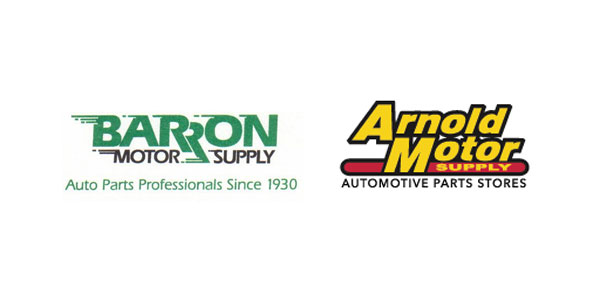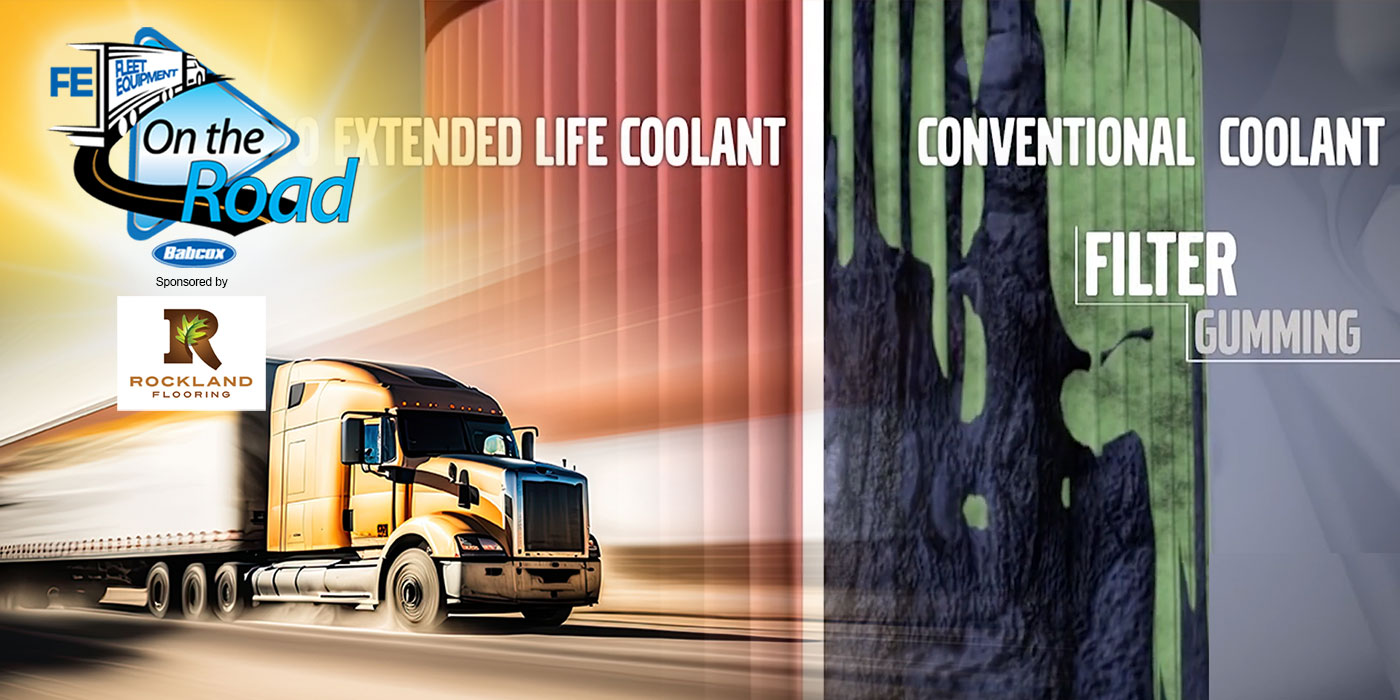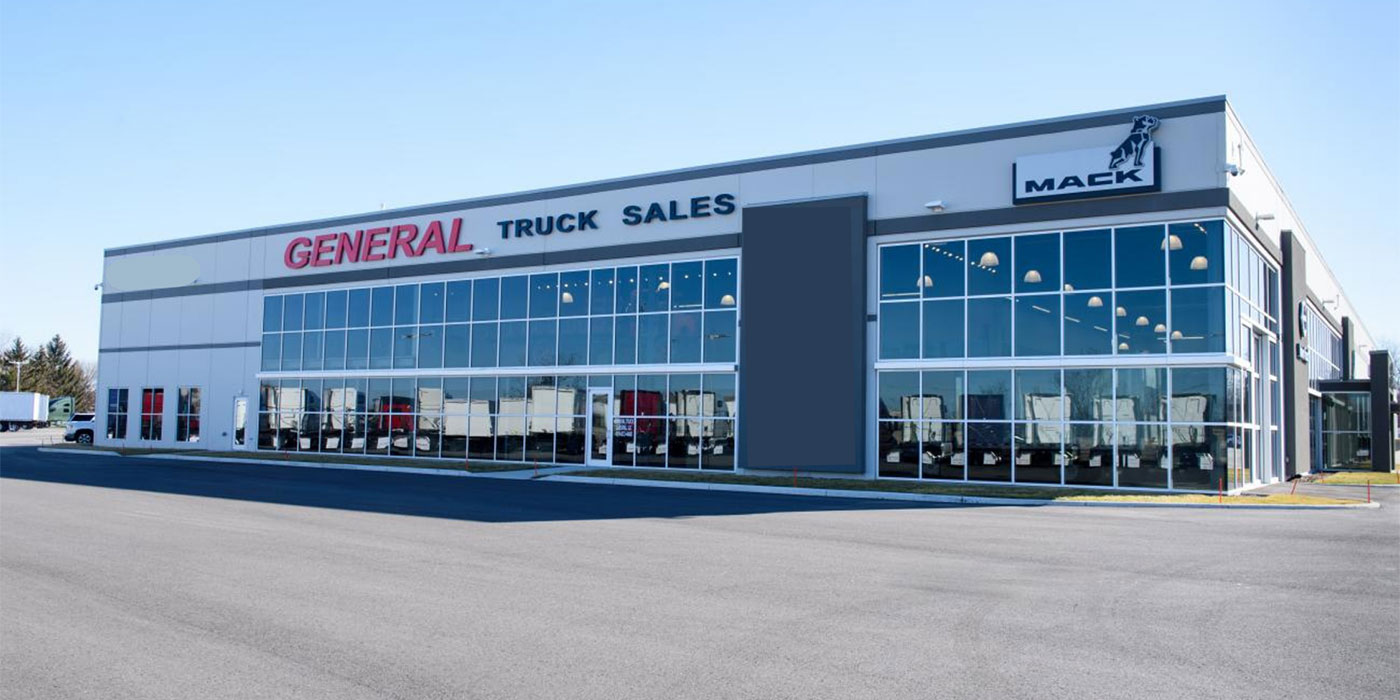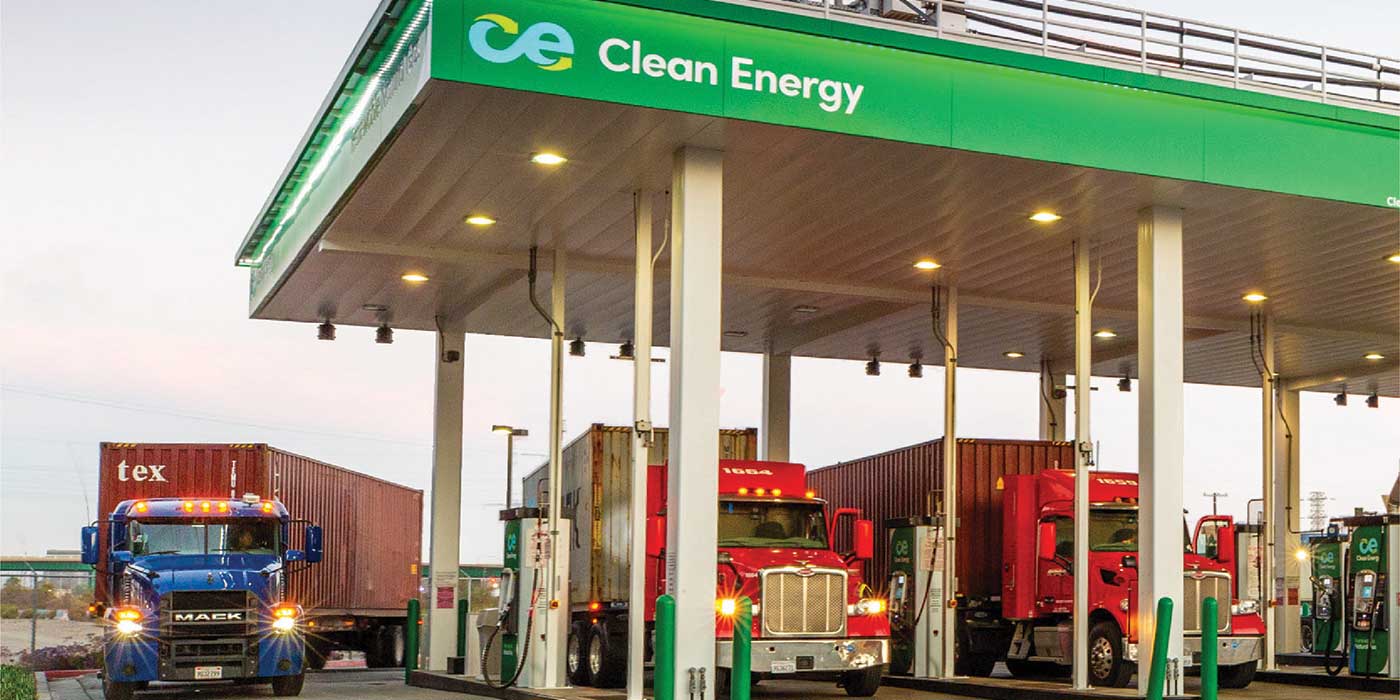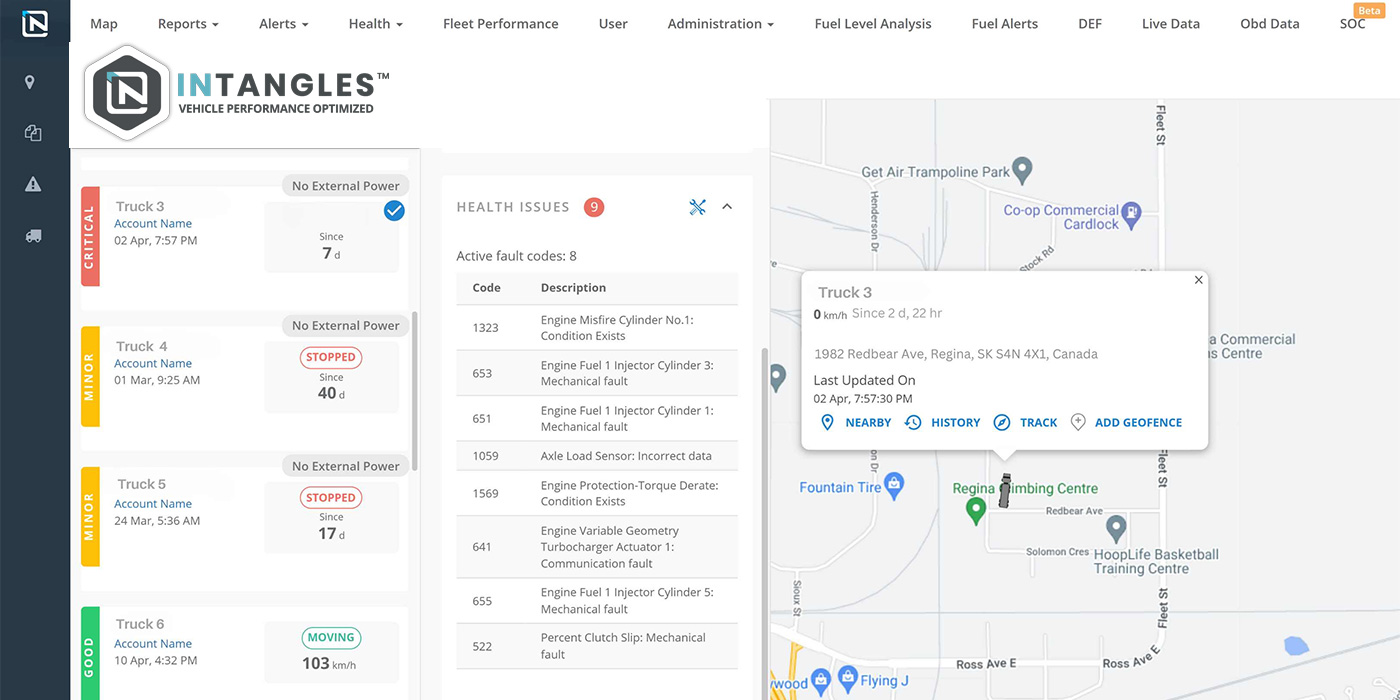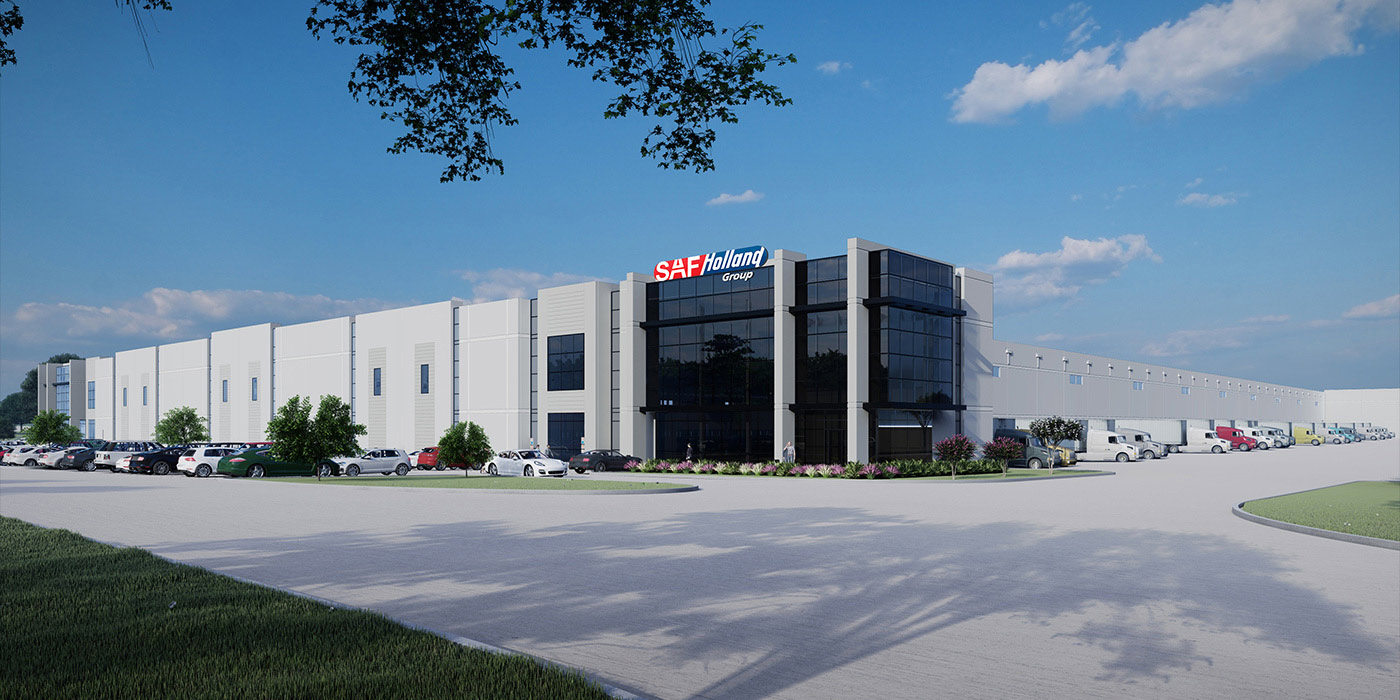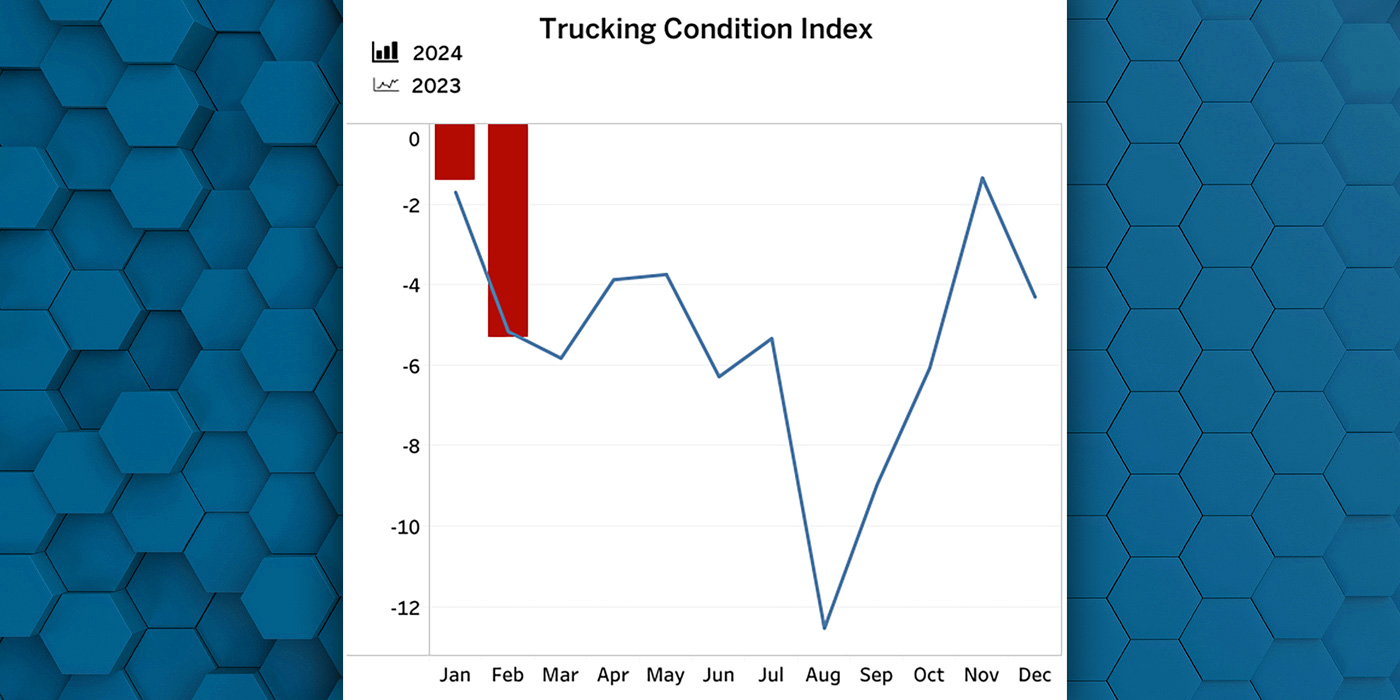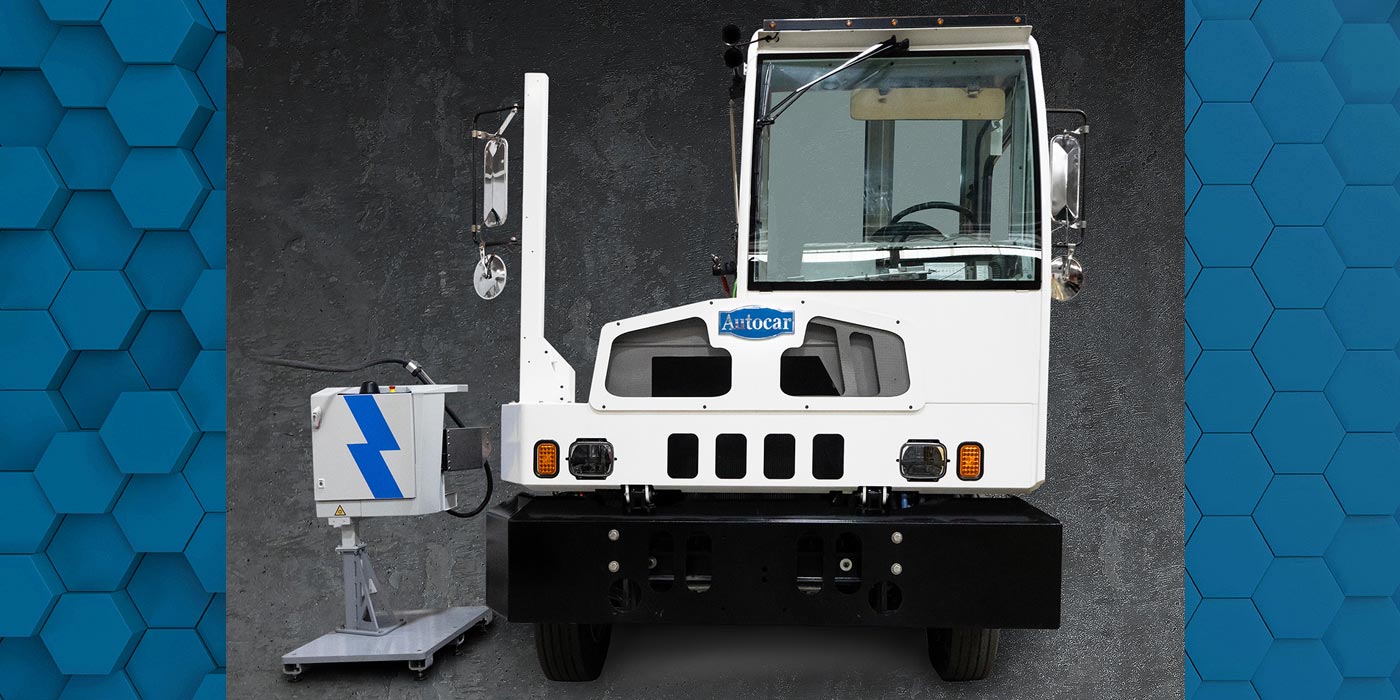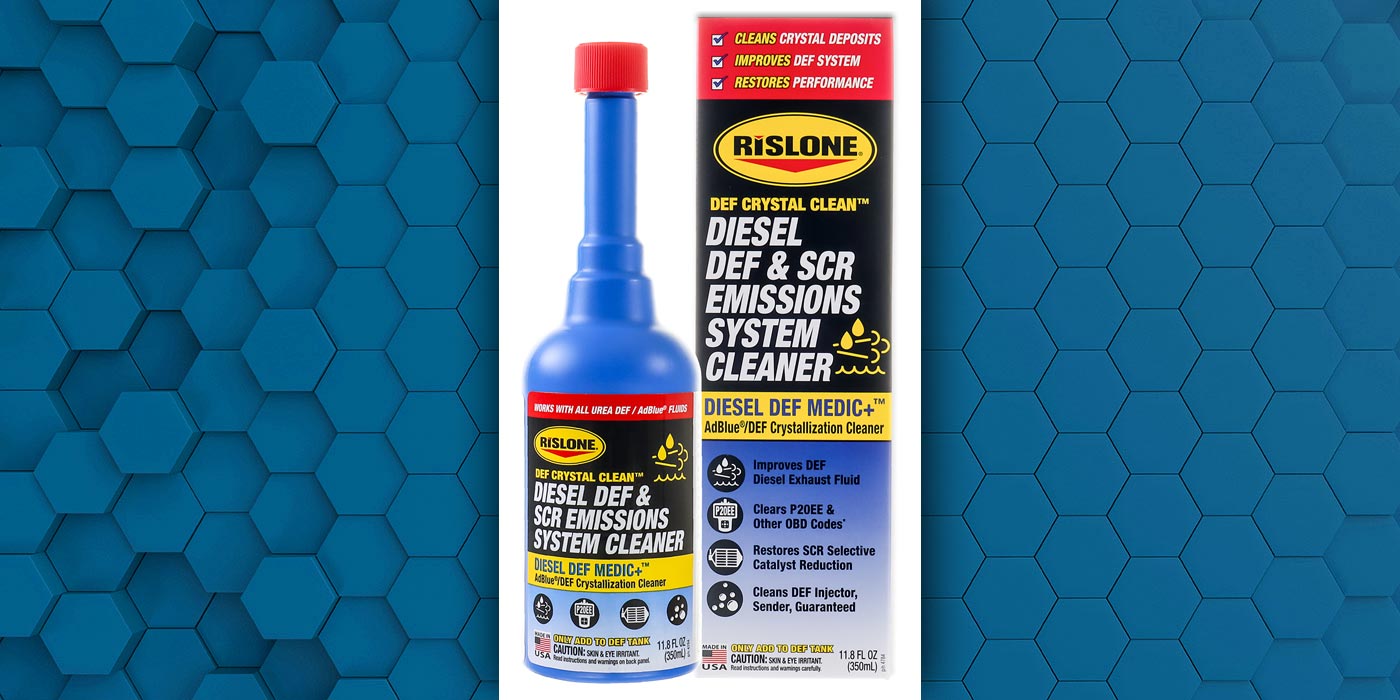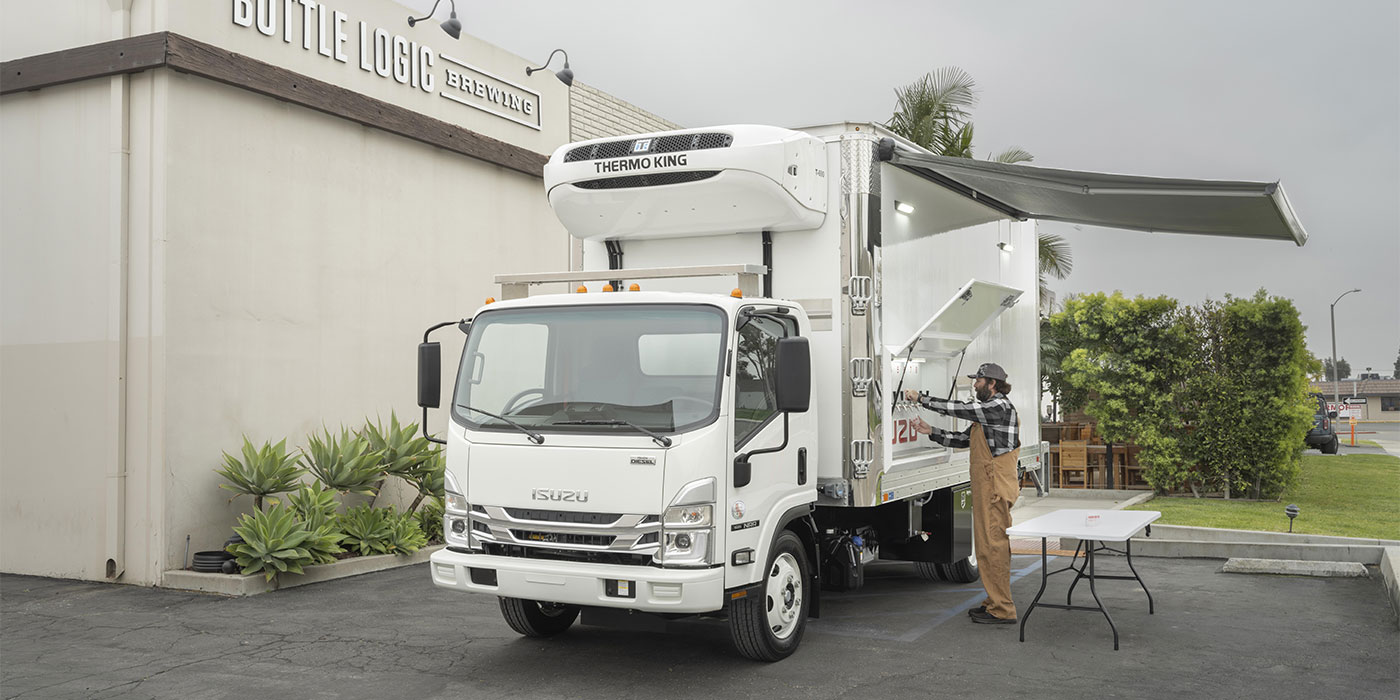When it comes to oil drains, there are fleet managers who depend heavily on used oil analysis and those who do not.
Those who do not employ used oil analysis usually rely on OE and lubricant supplier recommendations when dealing with today’s more technologically advanced engines and new lubricants. Since every operation is different, and applications vary significantly from fleet to fleet, it is impossible to say whether one approach is better than the other. However, many fleets –– especially those running a mix of engines and wishing to optimize drain intervals –– are turning to used oil analysis for the information they need to make educated choices.
Mixed fleets
Used oil analysis may be the key to managing a mixed fleet, one that is running both ’07 and pre-’07 engines. According to Walt Silveria, U.S. technical manger for Shell Lubricants, “Each fleet is going to be a little different depending on the type of service and engine models in use. Those fleet managers that want to optimize oil drain intervals need to understand oil analysis. A fleet manager has so many other maintenance things to do during a routine maintenance interval, and it is a challenge to find the time to take a used oil sample and to use the data the analysis provides. If the process of taking the sample and determining a drain does not fit into the PM schedule, then the process is not going to work.”
All things need to work together. To extend a drain interval, the fleet manager has to able to use the analysis data to set up an interval that works with the other scheduled maintenance requirements.
Silveria goes on to say that with the mix of API CI-4-plus and API CJ-4 oils currently in use, it is important to look at oil quality. Fleet equipment managers need to understand the importance of the viscosity information and the total base number (TBN) data on used-oil analysis reports. They also need to understand how extended drains impact these numbers.
By looking at indicators such as the fuel-soot, TBN and the total acid number, fleets can make predictive determinations on the life and quality of their engine oil. Also critical to the life of the engine are signs of contamination such as dirt, noted on the oil analysis report, which could indicate that the air intake system needs to be checked. If there are coolant elements in the oil, the cooling systems need to be inspected. The key indicators of potential problems are the presence of: dirt, coolant, fuel and soot. These indicators need to be checked on a regular basis.
“Sometimes it is difficult to convince fleet managers to do oil analysis,” says Silveria. “But it is really one of the easiest tools to use to help them understand what is happening in the engine. Oil analysis a cost-effective tool that will help a fleet catch a problem before it happens, such as a low viscosity reading that could be an indication of fuel dilution.” This is valuable information that can be used to avoid engine problems that might sideline a vehicle or lead to an expensive road call and downtime.
Silveria points out that used oil analysis provides a definite cost benefit, as does choosing a good quality lubricant. He says both can extend the life of the lubricant and the engine.
“People are becoming more proactive, especially with better technologies and hotter running engines,” says Silveria. “Those fleets that are running mixed fleets and using API CI-4-plus and API CJ-4 lubricants are depending on used oil analysis to help them better manage equipment.” Silveria adds, “There are a few basic things to remember when using oil analysis: make sure the label is filled out completely and correctly, be sure to use a qualified lab service, and last but not least, make sure to identify how much make-up oil was used. I can’t over stress the importance of including the information about make-up oil.” Adding oil changes the way in which the numbers are interpreted. While the newer engines may not require as much make-up oil as their predecessors, they may still need a top-up on the road. Make sure drivers report all added lubricants so you can include that information with the oil sample you send to the lab.
Get the facts
Steven Goodier, director of technology for BP Castrol, says that optimizing oil drains may actually mean doing them more frequently to protect engines from more soot or dirt in the lubricant. Conversely, the drains may be done less frequently if there is less soot in the lubricant and if a higher quality oil is used. But, he says, fleet managers will need to rely on used oil analysis to make either determination. Fleets usually follow OE recommended oil drain intervals.
When taking an oil drain sample, Goodier suggests using the container supplied by the laboratory that provides the analysis data. The sample should be taken from the oil stream shortly after the oil has started draining. The sample bottle should be properly labeled and sent off in the envelope that is provided. He reminds fleet managers to always include the engine mileage or hours of service.
“Most labs turn the information around within 48 hours after receiving it,” Goodier says. “We suggest that fleets look for certain key indicators, such as TBN, soot levels, wear acidity, and oil viscosity. With this information, managers are able to determine whether or not the oil really needed to be drained at that interval of if the interval needs to be adjusted to better protect the engine. For instance, an indicator that the interval may need to be shortened would be if the soot levels were too high.”
Goodier goes on to say, “If drain extension is to be considered, then the best option is to look at semi-synthetic products such as Castrol Hypuron, which is positioned to extend oil drain up to twice OEM drains. It does this by having the highest TBN levels and unique semi-synthetic base stock. Extended oil drains really are a way to take millions off the fleet maintenance budget. Oil analysis needs to be carried out to safeguard the engine by allowing the early detection of problem signs. Oil analysis data can help fleets troubleshoot and correct problems with the cooling system, fuel injectors, air filters and so on.”
Fleets shops that are using both API CI-4-plus and API CJ-4 oils need to be aware of the differences between these lubricants. API CI-4-plus was designed for engines built to the 2002 emission specifications and is designed to work with low sulfur fuel. API CJ-4 oils are designed specifically for 2007 engines that have diesel particulate filters (DPFs) and ultra low sulfur diesel fuel (ULSD). The API CJ-4 blends are designed to handle soot for these engines and formulated so they will not “poison” the DPFs. Goodier notes that while both the API CI-4-plus and API CJ-4 oils are backward compatible, API CI-4-plus lubricants should not be used in ’07 engines.
When asked what advice he could give to fleets about protecting engines and extending oil drains, Goodier replies, “Don’t cut corners on lubricants. Good engine oil may cost more upfront, but since it is a fundamental part of protecting equipment, especially in keeping the newer engines cool, cost should not be the first consideration. Remember, you get what you pay for.”
Timely topic
Eric Olsen, staff engineer with Chevron Global Lubricants, says that oil drain optimization is a timely topic because conditions are substantively different today with ULSD (15 PPM max sulfur diesel fuel) than they were just a year ago. Engine requirements are shifting too, with the newest engines now fitted with DPFs benefiting from the maintenance cost reductions made possible by the latest and most advanced API CJ-4 oils.
Olsen notes that used oil analyses are the foundation of drain optimization, and, depending on fleet size and makeup, can save lots of money. Each opportunity is different, and the differences create the opportunities for savings. But of most importance, for both independent operators and fleets of any size, is engine warranty compliance. Manufacturer guidelines for oil specification and service (drain) intervals are the starting point. For example, a fleet using a particular engine could choose an oil that satisfies the minimum manufacturer requirements, for example, API CI-4-plus SAE 15W-40, drained at a certain mileage interval. But they also could chose among better oils that carry more comprehensive performance credentials, such as Chevron Delo 400 Multigrade with ECF-2, VDS-3, Cummins CES 20078, etc. The fact is that engine oils are complicated, so it is difficult for fleets to understand the features that are available, and how selection of better and more expensive oil can actually reduce operating costs. Fleets need to garner advice on the most appropriate lubricant products, and whether or not a used oil analysis program might be appropriate to identify optimization potentials.
According to Olsen, “Most fleets have a mix of engine types and ages. Selecting a well-credentialed oil such as Delo 400 Multigrade SAE 15W-40 provides an advantage. It is often most efficient to inventory a single oil that is compatible for all of the units. In an extreme, optimization could mean selection of different oils for each type of equipment, but more frequently the simplicity of a single product with robust performance certifications will win in the end.”
With all the choices today, Olsen says that the latest and greatest engine oil category is API CJ-4, which was introduced last year to enable the revolution of diesel engine emissions control required to meet 2007 Federal Emissions Standards. With DPFs, the clouds of harmful emissions have largely been eliminated. “DPFs are highly efficient for capture of the carbonaceous soot, and must be periodically regenerated to burn away the accumulated carbon, kind of like a self-cleaning oven,” Olsen explains. Without regeneration, the DPF would quickly plug-up, hurting power and fuel economy performance. A critical feature for API CJ-4 is the limitation on sulfated ash content, which is a measure of the lubricant metals’ contribution to irreversible DPF fouling caused by crankcase oil consumption.
“Irreversible fouling can be compared to the stuff you need to wipe away from your oven following a cleaning cycle. In an engine, over many miles of operation, the accumulated combustion products of lubricant metals restrict the ability of the DPF to breath, which ultimately requires removal for cleaning at an authorized shop,” says Olsen. Using API CJ-4 oils can minimize the need for DPF cleaning, keeping a fleet’s engines out of the garage and in service longer. Olsen added, “API CJ–4 oils are also backwards compatible, and provide improved anti-wear performance for all diesels whether DPF equipped or not.”
Olsen goes on to say, “The proper selection of all performance fluids including engine oils, hydraulic oils, transmission fluids, and engine coolants are important decisions for keeping fleets in service longer while minimizing costs and maximizing profits. But nothing can hurt a fleet faster than equipment downtime for unscheduled repairs.”
Consult the experts
“Oil drain intervals are a complicated performance parameter with a number of metrics that need to be carefully considered,” says Yeong Kwon, product advisor, commercial vehicle lubricants for ExxonMobil lubricants and specialties. “First, it is important to consult the recommendations provided in the owner’s manual of fleet vehicle(s). In addition, another key consideration is the analysis of the impact of driving conditions vehicles typically face, such as heavy loads, operating in high or low temperature extremes, etc.”
He goes on to say that some of the other factors to consider include maintenance monitoring, used oil analysis and lubricant quality and performance. “Many of the fleets with whom we work consistently and successfully get the most out of their drain intervals by utilizing frequent oil analysis and carefully monitoring the results.
“Many fleets that we know have generated long drain intervals for their vehicles by utilizing synthetic lubricants, like Mobil Delvac 1 ESP fully synthetic and Mobil Delvac Elite semi-synthetic. Compared to conventional, mineral-based oils, fully synthetic and semi-synthetic oils offer a number of advantages that can help enhance drain intervals, including exceptional oxidation stability and wear control, as well as enhanced performance during low temperature operation, which is critical for fleets that do a lot of business in cold weather climates during the winter.”
When it comes to used oil analysis for drain optimization programs, Kwon says that regardless of the equipment they rely on, any fleet can find value partnering with a lubricant supplier to implement a comprehensive oil analysis program. By carefully and frequently monitoring used oil analysis results, fleet maintenance managers can help enhance equipment durability and reliability, as well as anticipate warning signs of potential future failures. As a result, a maintenance manager can leverage an oil analysis program to help reduce overall maintenance costs. And, after all, everyone likes saving money.”
ExxonMobil currently has API CI-4, API CI-4-plus and API CJ-4 oils in the marketplace. Kwon notes that the choice of how many oils fleet managers may want to carry is completely up to them. He adds that for any equipment that is currently using an API CI-4 or API CI-4 -plus oil, any Mobil Delvac API CJ-4 oil will be just fine. As a result, he says, it will allow the use of a single oil for model-year 2007 as well as older equipment.
“One factor to consider,” says Kwon, “is that since aftertreatment devices, such as DPFs and diesel oxidation catalysts (DCO) are sensitive to ash, phosphorus and sulfur, use of a product that does not meet the API CJ-4 chemical limits on a sustained basis will reduce the life of the particulate filter required on all 2007 equipment and the diesel oxidation catalysts required in some 2007 equipment. In addition to more frequent cleanings, [using non-API CJ-4 oil] will also lead to potential back-pressure conditions that will reduce the operating and fuel efficiency of the engine.”
Kwon notes that fleet managers commonly ask about the performance improvements of API CJ-4 oils compared to API CI-4 PLUS oils. He says, “As often occurs with designs that either add power or reduce emissions, the internal environment of the 2007 engine is somewhat harsher than previous engines. Most notable in influencing these conditions is the fact that EGR rates in 2007 equipment are nearly double from where they were in the past. Since exhaust gas carries with it heat and soot, that means that those levels in 2007 engines will be higher and harsher than previous years. API CJ-4 oils are formulated to better deal with higher levels of heat and soot through better resistance to oxidation and thermal degradation, better resistance to high temperature deposits, and better dispersancy of soot and contaminants for today’s engines.”
Team effort
Mark Betner, product line manger for Citgo Petroleum Corp., says his company highly recommends that fleets consult with engine manufacturers, engine oil/filter and oil analysis providers before proceeding with extending oil drain intervals. He also suggests fleets make sure suppliers are willing to provide help in achieving the fleet’s goals.
Betner cautions that doing used oil analysis does not necessarily mean you can extend the oil service interval. Some fleets are possibly already over-extended in respect to engine oil condition and protecting optimum engine life. He says, “The more accurate definition of oil drain interval optimization is implementing and understanding the optimum utilization of engine oil service life while protecting the engine warranty and/or engine life. Do not rely solely on engine oil, filter or aftermarket engine oil additive claims. There is much more to optimization than oil and filter quality and other performance claims.”
Betner suggests the following:
• Know the engine OE’s recommendations.
• Know the engine filter capability.
• Factor in operating conditions: engine idle time, loads, etc.
• Factor in fuel quality.
• Factor in maintenance: poor maintenance leads to early engine failures.
• Utilize oil analysis consistently.
• Consider oil performance capability. All oils are not alike.
“Oil analysis is another tool needed to optimize engine oil service intervals and some engine manufacturers either require or highly recommend this it as part of their warranty, or, at the very least, part of their recommendations,” says Betner. “When a fleet extends its oil service intervals beyond engine manufacturer recommendations there is some risk both for engine life and warranty protection. In the event there is an engine problem and a fleet has extended engine oil service interval beyond engine maker’s recommendations, the engine manufacturer will usually ask for two things: service recorded and oil analysis reports. Fleets that don’t have an oil analysis history, have already lost a major defense.
“Oil analysis history is the receipt and record of how oil condition may be impacting engine protection. An oil analysis history that indicates chronic cooling, air induction contamination and fueling problems such as fuel dilution will serve you well when it comes time to review the possible root causes of engine failure. On the other hand, a clean oil analysis history in respect to contamination, oil condition and wear metal trends will serve you well in the event of a warranty dispute and ultimately serve the ultimate goal of optimization of engine life.”
Betner goes on to say that if fleets are attempting to use oil analysis as a tool to optimize engine oil service intervals it is important to understand the tests needed to get a full picture of oil condition. It is important to consult with the engine builder and oil analysis provider regarding fleet goals and what is needed to get a full picture to support oil drain interval optimization.
When it comes to mixed fleets, with old and new engines, Betner says the same guidelines and recommendations listed above hold true. Older engines may have factors such as higher oil consumption and may not have some of the newer exhaust emission devices that, while they create greater stress on the oil, may prolong engine oil service life. Ultimately, it is important to follow the same guidelines.
“Mixed age fleets may end up with different oil drain interval potential, but most fleet managers may find it difficult to segregate some units from others and ultimately may adopt an engine oil service interval that protects their entire fleet even if it means implementing a more conservative oil drain interval for some of their units,” Betner adds.
As for comparing API CJ-4 with previous engine oil categories, Betner says, “Use the latest technology, which is API CJ-4 2007 engine oil technology, which in the Citgo line is superior to the previous CI-4 and CI–4-plus type products in respect to overall engine protection and oil drain optimization. Again, don’t buy into the assumption that older oils are cheaper and can save a few bucks; this is not the best way of controlling the budget.”
Lab views
The technical experts at Polaris Laboratories advise that fleet managers should first determine realistic, attainable goals for safely optimizing oil drain intervals. Managers should discuss with the OEM any optimizing goals that go beyond factory recommendations. They should also discuss their goals with their lube supplier to identify a lubricant that is both appropriate for the engine classification and capable of achieving the optimization goal.
Fleet managers should then use oil analysis to monitor the oil’s properties. TBN should not go below 50 percent of the oil’s starting TBN, total acid number should not be higher than the TBN, viscosity should be within 10 percent of the oil’s starting viscosity and oxidation/nitration should be below 25 absorption units per centimeter.
Excessive contamination from dirt, coolant, fuel or soot indicates the oil and filter should be changed regardless of what the above test results show or where the unit is within the drain interval.
Polaris says fleets can’t safely optimize drain intervals without oil analysis –– it’s the only way to be sure of the wear occurring, the contamination present, the TBN and anti-wear additive depletion, and the rate at which oxidation, nitration and viscosity are increasing.
Fleets ensure that new and older engines they are running are at the best drain intervals by fine-tuning each point mentioned above. Set realistic goals, identify the right oil and test it at regular intervals to identify even slight changes in its physical properties. Only then can you be sure you’re at the safest optimum drain interval.
Fleets managers can use the data provided by oil analysis to protect vehicles. Oil analysis laboratories can provide several recommendations as to when lubricants and filters should be changed and maintenance performed to protect and extend the life of the vehicle. My best advice is to take the action recommended and then provide the laboratory with feedback as to what you found and what was actually done to correct the problem. Acting on the recommendations maximizes vehicle life.
When it comes to taking a used oil drain sample, the ideal method is using a valve installed in the oil galley or an oil line upstream of the filter, preferably where turbulent flow is occurring. If this is not an option, pull the sample using a vacuum pump and plastic tubing inserted into the dipstick opening to approximately the middle of the reservoir. The engine must be running in order to take the sample. When taking any sample, the oil should be as close to operating temperature as possible.
The lab experts at Polaris caution that carriers who typically buy vehicles and only keep them through the warranty period before trading them in usually don’t fully understand the value of oil analysis. They don’t see that using oil analysis to detect potential failures caused by common issues such as coolant leaks, air intake problems (dirt), blow-by (fuel and soot) and excessive wear can save them a great deal of money. Oil analysis cannot only safely extend drain intervals; it can also reduce unscheduled downtime, failures on the road, late freight delivery fines and labor costs. Where warranty issues are concerned, oil analysis benefits the fleet as well as the OEM. It’s always in the OEM’s best interest to pay a warranty claim on a relatively minor event rather than one on a catastrophic failure. It’s in everyone’s best interest to catch a problem at the earliest stage possible.
Taking an inside look
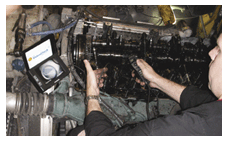
In addition to encouraging used oil analysis, Shell Lubricants offers Shell VideoCheck, a digital inspection service, which is offered to small- and medium-sized diesel truck fleet customers throughout the country as a cost-effective alternative way of inspecting diesel engine components. While the Shell VideoCheck service originally was used in stationary gas engines and commercial aircraft turbines, Shell has adapted this technology for diesel engines as a high-tech, low-cost means of inspecting combustion chambers. Rather than dismantling an engine to identify problems related to the combustion chamber and/or lubrication, the Shell VideoCheck service uses a digital fiber-optic method of inspecting the inside of a diesel engine.

